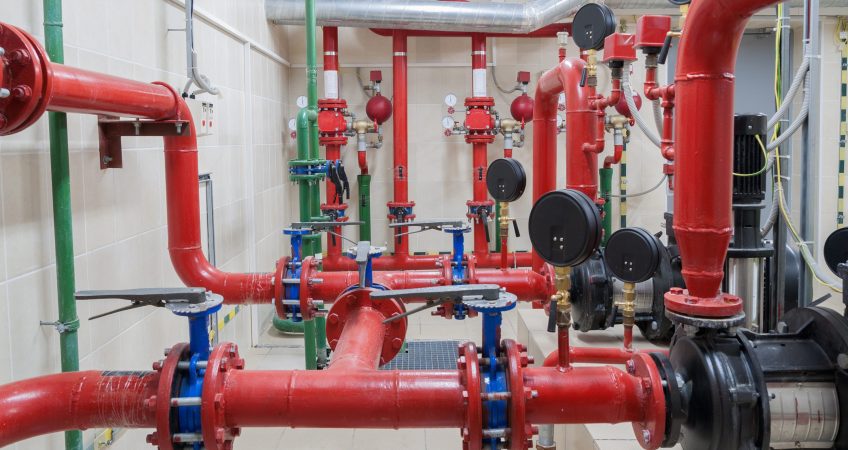In the realm of firefighting, where every precious second counts, having the right equipment on hand can make all the difference in safeguarding lives and property. Among the indispensable tools within a firefighter’s arsenal, the ‘fire pump’ emerges as a pivotal component. This article will now delve comprehensively into the profound significance of fire pumps in firefighting operations and elucidate how they seamlessly contribute to heightened efficiency and enhanced safety.
-
Understanding the Fire Pump
A fire pump is a specialized piece of equipment designed to boost the water pressure in a fire suppression system, ensuring a sufficient and consistent flow of water to extinguish fires effectively. It is typically powered by electricity, diesel engines, or even hydraulics, depending on the application and the available resources. The role of a fire pump is paramount in maintaining adequate water pressure, especially in high-rise buildings and remote areas where a natural water supply might be insufficient.
-
The Role of Fire Pumps in Firefighting
Fire pumps play a pivotal role in firefighting operations. Here’s how:
a. Maintaining Water Pressure:
Fire pumps ensure that there is enough water pressure to propel water through hoses and nozzles, enabling firefighters to reach the flames and control the fire effectively.
b. Supplying Water in Remote Locations:
In areas where natural water sources are scarce or non-existent, fire pumps can draw water from alternative sources, such as dedicated storage tanks or portable containers.
c. High-Rise Firefighting: In skyscrapers and tall buildings, fire pumps are essential to overcome the challenges of gravity and distance. They help deliver water to the upper floors, where fires can be particularly devastating.
d. Consistent Water Supply: Fire pumps provide a steady supply of water, ensuring that firefighters do not run out of water during critical moments in a firefighting operation.
-
Types of Fire Pumps
There are two main types of fire pumps: centrifugal and positive displacement.
a. Centrifugal Fire Pumps: These pumps use centrifugal force to pressurize water. They are often used for high-flow, low-pressure applications.
b. Positive Displacement Fire Pumps: These pumps use reciprocating or rotary mechanisms to displace a fixed amount of water with each stroke or rotation. They are typically used for high-pressure, low-flow applications.
-
Selecting the Right Fire Pump
Choosing the right fire pump is crucial to ensure its effectiveness in firefighting scenarios. Factors to consider include:
a. Flow Rate and Pressure Requirements: The size of the building, the potential fire hazards, and the distance the water needs to travel will determine the required flow rate and pressure.
b. Power Source: Depending on the availability of power sources like electricity or diesel, you’ll need to select an appropriate fire pump.
c. Maintenance and Reliability: Fire pumps should be regularly maintained to ensure they function correctly when needed. Choose a pump with a reputation for reliability.
d. Compliance with Standards: Ensure that the selected fire pump complies with industry standards and regulations to meet safety requirements.
-
Installation and Maintenance
Proper installation and regular maintenance are vital for the optimal performance of fire pumps. Here are some essential steps:
a. Professional Installation: Have a qualified technician install the fire pump to ensure it is correctly set up and integrated with the fire suppression system.
b. Regular Inspections: Conduct routine inspections to identify any wear and tear, leaks, or other issues that may affect the pump’s functionality.
c. Testing: Regularly test the fire pump to ensure it operates as expected. This includes flow testing and ensuring that the power source is functional.
d. Emergency Backup: Consider having an emergency backup power source for the pump to ensure it operates even during power outages.
-
Conclusion
In the world of firefighting, where every moment counts, having a reliable fire pump is non-negotiable. It ensures that firefighters have the necessary water pressure to combat flames effectively, especially in challenging scenarios such as high-rise buildings or remote locations. Choosing the right type of fire pump and ensuring proper installation and maintenance are essential steps in enhancing firefighting efficiency and safety.
Remember that when it comes to fire pumps, reliability is key. With the right equipment and proper care, firefighters can tackle even the most formidable blazes with confidence, safeguarding lives and property. Fire pumps are not just tools; they are lifelines in the battle against fire.
High secure system your perfect partner in MEP Systems
Are you fully prepared to fortify your firefighting capabilities and secure your properties with confidence? Look no further! High Secure System excels in the design, meticulous installation, and comprehensive maintenance of premium MEP systems, complete with dependable fire pumps. Don’t take any unnecessary risks with your fire protection. Take proactive steps by reaching out to us today for a personalized consultation. Let us work together to elevate your safety measures to the highest achievable standards. Your peace of mind is just a call away. Waste no time; contact us now and prioritize safety as your utmost concern!
For all your maintenance needs, visit our dedicated Facility Management website at HSS-FM.

